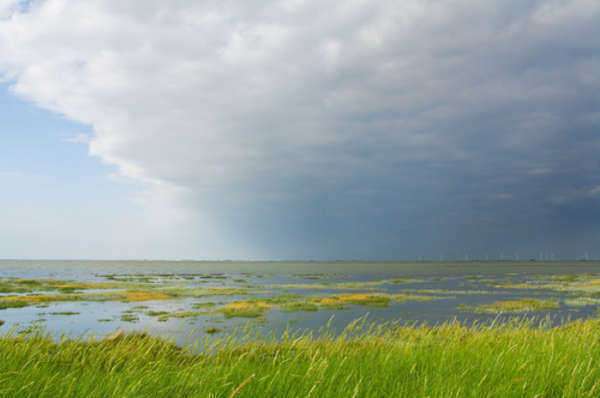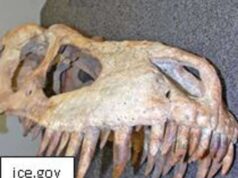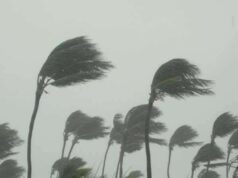
Bark Beetles Have Major Effects on Western US
Bark beetles are a group of insects that play a significant role in shaping forests across North America. While some species of bark beetles are beneficial to forest ecosystems, others can have a devastating impact on tree populations. In recent years, bark beetle outbreaks in the western United States have caused widespread damage to millions of acres of forest. This article explores the effects of bark beetles on the western US.
Types of Bark Beetles
There are several species of bark beetles that can be found in western forests, including the mountain pine beetle, spruce beetle, and the western balsam bark beetle. The mountain pine beetle is the most destructive of these pests and has been responsible for the majority of tree deaths in western forests.
Life Cycle and Damage
Bark beetles typically infest trees that are stressed or weakened due to drought, disease, or injury. The female beetle will bore into the bark of the tree and lay eggs in galleries beneath the bark. Once the eggs hatch, the larvae will feed on the phloem and cambium layers of the tree, ultimately causing the tree to die.
Bark beetle infestations can spread rapidly and cause widespread damage to forests. In recent years, bark beetle outbreaks have affected millions of acres of forests in the western United States, especially in Colorado, Wyoming, Montana, and Idaho.
Effects on Forests
The effects of bark beetle infestations on forests can be severe and long-lasting. As trees die, they become dry and brittle, increasing the risk of wildfire. Dead trees can also become hazards, falling onto roads and trails and posing a danger to people and wildlife.
In addition, bark beetle outbreaks can have a major impact on forest ecosystems. Dead trees provide habitat and food for a wide range of organisms, but over time, the loss of trees can lead to a decline in wildlife populations. The loss of trees also reduces the ability of forests to remove carbon dioxide from the atmosphere, exacerbating the effects of climate change.
Management Strategies
Forest managers are working to combat bark beetle outbreaks through a variety of strategies, including thinning forests to reduce tree density, removing dead and dying trees, and using insecticides to control beetle populations. These strategies can help to slow the spread of beetle infestations and reduce the impacts of outbreaks.
Conclusion
Bark beetle infestations are a major threat to forests in the western United States. These pests can cause widespread damage to tree populations, disrupt forest ecosystems, and increase the risk of wildfire. Effective management strategies are essential for reducing the impacts of bark beetle outbreaks and maintaining healthy forest ecosystems for future generations.
A beetle that burrows into the bark of pine trees has begun causing problems not just for the trees themselves, but even for the watersheds and ecosystems around them.
According to research funded in part by the National Science Foundation, an outbreak of the mountain pine beetle, or bark beetle, has been ongoing for years and has now killed millions of total acres of forest. The beetles affect forests ranging from western Canada to the southwestern United States, and as the trees have died off, other changes have followed.
Mudslides are more common after trees die, because root systems no longer hold soil in place, preventing erosion. Wildfires, including major fires in Colorado, have also been made significantly more severe by the beetles. That’s because dry, dead wood catches fire much more easily than a living forest, and burns hotter, making the resulting fires harder to fight.
Some scientists speculate that the reason for the beetle’s recent proliferation is anthropogenic climate change. According to these biologists, cold winters were the primary way that bark beetle populations were held to a manageable number in the past. As winters have become warmer—with some locations that used to freeze now having no frosty days—the population of beetles has been allowed to grow unchecked.
One species, the lodgepole pine, has been particularly affected by the mountain pine beetle. Today, scientists estimate that 95 percent of mature lodgepole pines have either died already due to bark beetle infestation or are currently infested.
The death of these trees has also impacted water. With fewer trees to shade the snow, less snowpack remains by the time spring comes around, creating less melting water. This, in turn, causes droughts in mountain valleys and changes when spring runoff peaks. Making matters worse, high amounts of dissolved carbon from the rotting trees deteriorate water quality further in regions impacted by the bark beetle.
Bark beetles actually work by infecting trees with a blue fungus that makes the tree turn into material edible by the beetles. In a few years’ time, scientists caution that the last lodgepole pines may have become beetle food.
The United States is no stranger to tree loss due to parasitic organisms: in the mid 20th century, American streets changed forever when Dutch elm disease felled most of the nation’s elm trees. Dutch elm disease is also caused by a fungus spread into trees by beetles. Only the creation of disease resistant cultivars made it possible for elm trees to continue to grow without disease in the United States and Europe.























